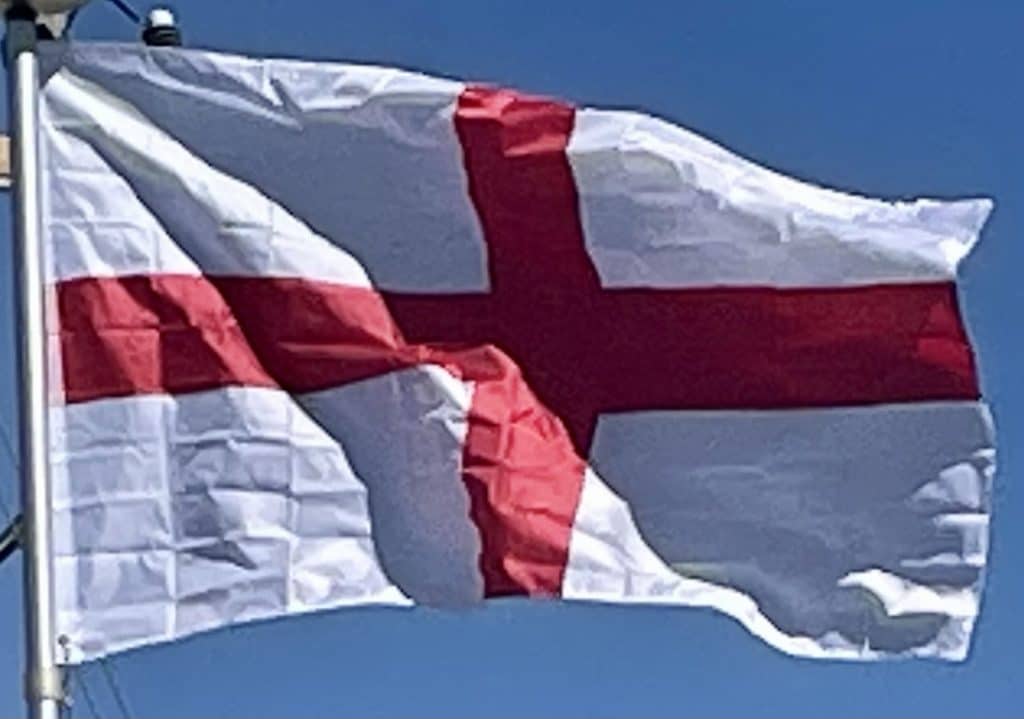Geographically England includes the central and southern two-thirds of the island of Great Britain, plus such offshore islands as the Isle of Wight and the Isles of Scilly. It is bordered by two other countries of the United Kingdom: to the north by Scotland and to the west by Wales. England is closer than any other part of mainland Britain to the European continent. It is separated from France (Hauts-de-France) by a 21-mile (34 km) sea gap, though the two countries are connected by the Channel Tunnel near Folkestone. England also has shores on the Irish Sea, North Sea and Atlantic Ocean.
The ports of London, Liverpool, and Newcastle lie on the tidal rivers Thames, Mersey and Tyne respectively. At 220 miles (350 km), the Severn is the longest river flowing through England. It empties into the Bristol Channel and is notable for its Severn Bore (a tidal bore), which can reach 2 metres (6.6 ft) in height. However, the longest river entirely in England is the Thames, which is 215 miles (346 km) in length.
There are many lakes in England; the largest is Windermere, within the aptly named Lake District. Most of England’s landscape consists of low hills and plains, with upland and mountainous terrain in the north and west of the country. The northern uplands include the Pennines, a chain of uplands dividing east and west, the Lake District mountains in Cumbria, and the Cheviot Hills, straddling the border between England and Scotland. The highest point in England, at 978 metres (3,209 ft), is Scafell Pike in the Lake District. The Shropshire Hills are near Wales while Dartmoor and Exmoor are two upland areas in the south-west of the country. The approximate dividing line between terrain types is often indicated by the Tees-Exe line.
In geological terms, the Pennines, known as the “backbone of England”, are the oldest range of mountains in the country, originating from the end of the Paleozoic Era around 300 million years ago. Their geological composition includes, among others, sandstone and limestone, and also coal. There are karst landscapes in calcite areas such as parts of Yorkshire and Derbyshire. The Pennine landscape is high moorland in upland areas, indented by fertile valleys of the region’s rivers. They contain two national parks, the Yorkshire Dales and the Peak District. In the West Country, Dartmoor and Exmoor of the Southwest Peninsula include upland moorland supported by granite, and enjoy a mild climate; both are national parks.
The English Lowlands are in the central and southern regions of the country, consisting of green rolling hills, including the Cotswold Hills, Chiltern Hills, North and South Downs; where they meet the sea they form white rock exposures such as the cliffs of Dover. This also includes relatively flat plains such as the Salisbury Plain, Somerset Levels, South Coast Plain and The Fens.
Economy:

England’s economy is one of the largest and most dynamic in the world, with an average GDP per capita of £28,100 or $36,000. Her Majesty’s Treasury, led by the Chancellor of the Exchequer, is responsible for developing and executing the government’s public finance policy and economic policy. Usually regarded as a mixed market economy, it has adopted many free market principles, yet maintains an advanced social welfare infrastructure. The official currency in England is the pound sterling, whose ISO 4217 code is GBP. Taxation in England is quite competitive when compared to much of the rest of Europe – as of 2014 the basic rate of personal tax is 20% on taxable income up to £31,865 above the personal tax-free allowance (normally £10,000), and 40% on any additional earnings above that amount.

